Defining Heroic Literature
The Battle of Maldon* is regarded as one of the best extant examples of Anglo Saxon heroic poetry. In order to fully comprehend Maldon‘s prominent place within the Anglo Saxon heroic canon, a comprehensive definition of heroic literature is necessary. Roberta Frank supplied such a definition in her essay “The Battle of Maldon and Heroic Literature”. The defining aspects of heroic literature that she highlighted are: by being a speech filled martial narratives, with a focus on the words and actions of the hero or heroes, a person of indomitable spirit and the drive for glory in battle (Frank).
The Battle of Maldon effortlessly satisfies this definition as it is essentially a martial narrative consisting of six speeches emphasising the heroic code of behaviour. The Maldon poet’s focus is certainly bent on the actions and words of the heroes of the poem, particularly the Essex Ealdorman Byrhtnoth and leader of the English forces, who can candidly be described as a person of “unconquerable will” (Frank 199). Although The Battle of Maldon shares the drive for glory with other heroic literature, it is the extent to which it celebrates the heroic drive for seeking glory by dying in battle that serves to distinguish The Battle of Maldon from its heroic literary counterparts.
Heroic Literary Motifs
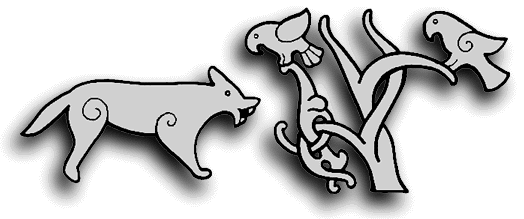
- The beasts of battle literary convention was used by poets to augment the suspense of the heroic narrative. For an Anglo Saxon audience allusions to carrion creatures specifically, ravens, eagles and wolves functioned as portents of impending doom. The first of the carrion creatues that the Maldon poet introduces is the wolf. At line 96, the pivotal crossing of the river Pante via the causeway, the poet deliberately depicts the invading Vikings as “wælwulfas”, effectively equating them with the beasts of battle: “Wodon þa wælwulfas” (96).
The poetic compound of the words “wæl” meaning slaughter and “wulfas” the Old English plural form of wolf, not only serves to satisfy this heroic literary motif, but is an excellent example of the Maldon poet’s sophisticated artistry in coining kennings or poetic circumlocutions for describing the Vikings (Robinson). Only when the Vikings or the “wælwulfas” have crossed the Pante and physical battle is certain, does the poet allude to the birds of prey: “Þær wearð hream ahafen; hremmas wundon, earn æses georn; wæs on eorþan cyrm” (106-107).
Feasting or Hall Motif
-
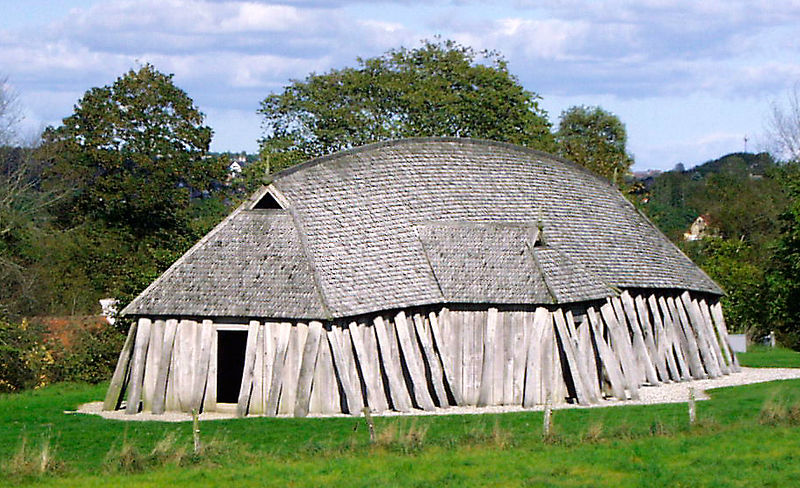
The hall in Anglo Saxon literature can be interpreted as a social and cultural microcosm for civilization.
The feasting or hall motif in heroic literature operates as a microcosm of the comitatus; the reciprocal relationship that existed in Anglo Saxon society between a lord and his retainers. Within this complex relationship it was a lord’s duty to supply rewards as recompense for his thanes’ earned and expected martial loyalty. References to feasting and the hall in heroic literature highlight the importance of the hall as the forum for strengthening this pivotal bond between a lord and his thanes. The poet blatantly makes reference to Byrhtnoth’s role as a treasure giver by describing him as a “beadgifan” and “sincgyfan” (290, 278).
This complex relationship is the crux of The Battle of Maldon. The poet overtly stresses the importance of this bond by referring to it in the opening line of Ælfwine’s heroic speech (which is the first of the speeches): “Gemunaþ þa mæla þe we oft æt meodo spræcon” (212-213).
The Crisis
Contrary to what one might expect the central conflict in The Battle of Maldon isn’t between the Vikings and the English. In fact the Maldon poet simply uses the Vikings as an impetus to emphasize the real crisis; the disintegration of the comitatus and its inherent heroic code of behaviour. As Frank and Clark adroitly articulate the central theme in Maldon is loyalty, and the moral battle between “heroism and cowardice” is evident throughout the poem (Frank; Clark 58).
Tolkien was evidently aware of this theme and he skilfully appropriated it into his own work. The influence of The Battle of Maldon on Aragorn’s speech at the Black Gate is evidently great, and his explicit reference to the breaking of the bonds of fellowship vocalises the implicit moral conflict amongst the English forces at Maldon.
[youtube=http://www.youtube.com/watch?v=x1jG1bity2E]
Glory Motif
Heroic literature perpetuates the heroic code of behaviour by promoting glorious and honourable deaths in battle over instinctual survival. This drive of fighting for fame is so explicit in The Battle of Maldon that the poem has been regarded as one of the best expressions of the heroic ideal in Anglo Saxon literature. Its powerful influence can still be felt by a modern audience after an interlude of hundreds of years.
In this second scene Tolkien uses Theoden (The Old English word for lord or leader) as a substitute for Byrhtnoth. In this instance Tolkien vocalises the heroes’ desire for an honourable and glorious death in battle through the Rohirrim’s charging to the word “death”.
Fight or Flight?
How The Battle of Maldon achieved its high status is down to the poet’s stylistic choice to deliberately juxtapose the heroic ideal with the flight of the cowards. This juxtaposition allows the audience to see that The Battle of Maldon is essentially a test of character as Ælfwine remarks himself at line (215) “nu mæg cunnian hwa cene sy”, now it will be tested who is brave.
There’s a distinct tone of disapproval throughout the flight of the cowards event that can be encapsulated in the words “hit riht ne wæs” (190). This is clearly felt in the poet’s description of Godric’s abandonment of his beloved lord: “Godric fram guþe, and þone godan forlet þe him mænigne oft mear gesealde…þe hit riht ne wæs” (187-190) and the beot or the heroic and boasting words that were spoken before battle are left unfulfilled in the time of need: “þa he gemot hæfde, þæt þær modelice manega spræcon þe eft æt þearfe þolian noldon” (199-200).
The poet’s allegiance is clearly with the heroes who stayed and fought. The repetitive nature of speeches after the flight of the cowards suggests that their rationale is to reinforce this heroic code of behaviour. Byrhtwold, the aged retainer and kinsman of the deceased leader Byrhtnoth, reminds the younger thanes of their duty after the flight of the cowards: “fram ic ne wille, ac ic me be healfe minum hlaforde…licgan þence” 317-318). After the cowards flee and the obvious hero Byrhtnoth dies, the poet focuses their attention on the words and actions of the men who fulfilled their oath and their beot: “Þa ðær wendon forð wlance þegenas, unearge men….hi woldan þa ealle oðer twega, lif forlætan oððe leofne gewrecan” (205-208).
Context and Patriotism
The poem’s appearance of verisimilitude has prompted speculation regarding its composition with some believing that it is a local and contemporary, even a personal account of the battle. It’s far more likely that the poem was written in the early 11th century, a period that was punctuated by excessive Viking raids and King Ethelred’s unpopular policy of paying the Danes’ tribute.
In this political context The Battle of Maldon and the poet’s evident celebration of the heroic ideal can be interpreted as deliberate poetic propaganda; where King Ethelred, the“unræd” and his policy is critiqued and Byrhtnoth’s unconquerable will in offering the Danes spears for tribute and defending his native country, King and people is undoubtedly supported.
The poet portrays Byrhtnoth as England’s hero and patriot; they do this effectively through Byrhtnoth’s speech which is replete with patriotic fervour “Hi willað eow to gafole garas syllan, ættryne ord” (47-48).
Conclusion
While The Battle of Maldon’s adherence to the literary motifs categorise it with the other examples of heroic literature, its prominent patriotic spirit in the face of defeat differentiate it from the rest of the heroic canon and explains how it continues to resonate to the present day. Or as James Joyce eloquently sums up:
James Joyce image sourced from izquotes.com
*All quotes from The Battle of Maldon were drawn from Elaine Treharne’s Anthology (see Works Cited).
Works Cited
Clark, George. “The Battle of Maldon: A Heroic Poem.” Speculum 43.1 (1968): pp. 52-71. Print.
Frank, Roberta. “The Battle of Maldon and Heroic Literature.” Scragg, Donald. The Battle of Maldon AD 991. Oxford: Blackwell, 1991. pp. 196-207. Print.
Joyce, James. The Dead. London: Faber and Faber, 2012. Print.
Lord Of The Rings; Theoden’s Speech. Shortened. N. p., 2011. Film.
Return of the King: Aragorn’s Speech at the Black Gate. N. p., 2012. Film.
Robinson, Fred C. “Some Aspects of the Maldon Poet’s Artistry.” The Journal of English and German Philology 75.1-2 (1976): pp. 25-40. Print.
Treharne, Elaine. Old and Middle English c.890 – c.1400: An Anthology. Second Edition. Oxford: Blackwell, 2004. Print.
Images Cited
Oxyman. “Byrthnoth’s statue at Maldon”. Photograph. 2008. Battle of Maldon. Wikimedia Commons. Web. 23 Oct. 2013.
Philosorapter. Meme. n.d.. Why are some men so cowardly they don’t want to the war and make their family and country proud? Troll Meme Generator. Web. 23 Oct. 2013.
Thyssen, Malene. Fyrkat Hus Stor. Photograph. 2002. Mead Hall. Wikimedia Commons. Web. 23 Oct. 2013.
Ward, Christine. “Beasts of Battle from the Ramsunaberget Runestone Sweden”. Photograph. n.d.. Amplification of Meaning in Germanic Poetry Through the use of Beasts of Battle Theme. The Viking Answer Lady. Web. 23 Oct. 2013.
![]() This work is licensed under a Creative Commons Attribution-NonCommercial-ShareAlike 4.0 International License.
This work is licensed under a Creative Commons Attribution-NonCommercial-ShareAlike 4.0 International License.
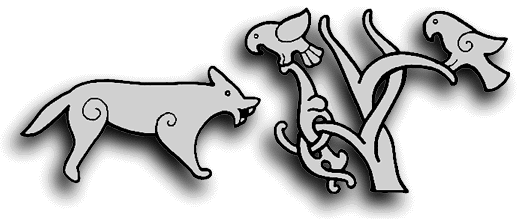
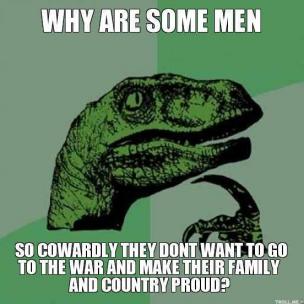
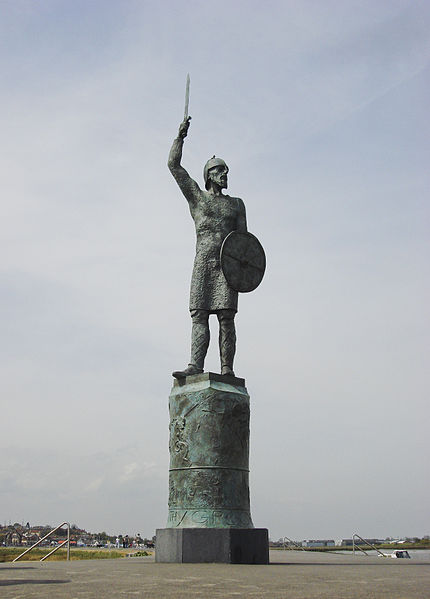
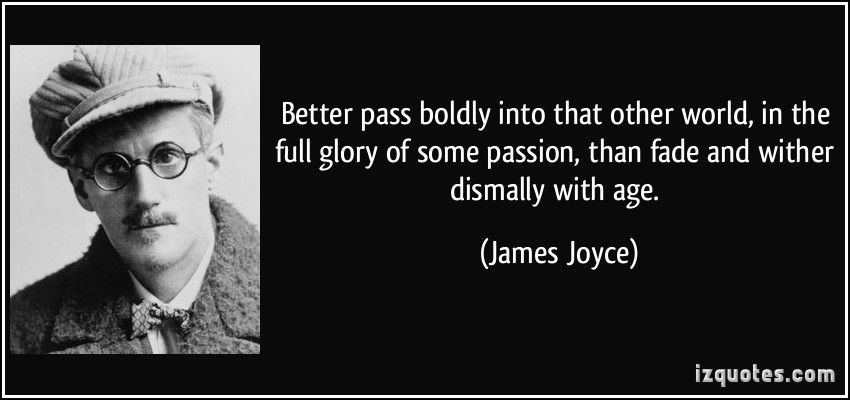
Gerald
March 19, 2015 at 4:58 pmWar is a fascinating subject. Despite the dubious morality of using violence to achieve personal or political aims. It remains that conflict has been used to do just that throughout recorded history.
Your article is very well done, a good read.